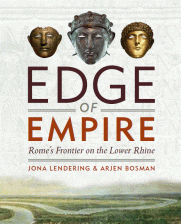One of the most famous words of Jesus, an expression that has become proverbal, is that “It is easier for a camel to pass through the eye of a needle than for a rich man to enter into the Kingdom of God” (Mark 10.25). Tour guides in the Near East will, when they bring tourists to a kervansaray, inevitably point at the small door-within-the-big-door, and tell the people that it is called “a needle’s eye”, that a camel might pass through it, and that Jesus’ words referred to this type of door.
That must be a very comfortable thought for wealthy Christian tourists. Just as a camel may, with some difficulty, enter the saray, they can enter the Kingdom of God. Unfortunately, the tour guide’s story is not true. Neither is the story true that there was a gate in ancient Jerusalem that was called “the Eye of the Needle”. There is simply no ancient Jewish or Christian text that refers to such a gate. And it is also unlikely, although not completely impossible, that there was a scribal error, and that the Gospel in fact refers to a cable (kamilos) instead of a camel (kamelos).
Jesus’ words have a parallel in the Babylonian Talmud (Berakoth 55b; Baba Mezi’a 38b): here, the difficulty of something is likened to an elephant being drawn through the eye of a needle. Jesus is quoting a Jewish proverb, meaning that something can never be done. This impossibility is also the subject of other stories: think only of the remark that “No one can serve God and Mammon” (Matthew 6.24). Or take the parabel about Lazarus and the rich man – even though it is not said that the rich man has committed evil, he is punished in Hell (Luke 16.19ff). The fact that he was rich and could feast sumptously, is presented as sufficient explanation.
In Jesus’ view, the rich had already received their share of happiness. He was not predicting that in the not too distant future, the poor would be happier, he was announcing that the rich would be punished: “Woe to you that are rich … woe to you that are filled … woe to you that now laugh” (Luke 6.24). No one has every said that Jesus’ message was easy – on the contrary.


 Subscribe to feed
Subscribe to feed
In Mark the word ῥαφίς rhaphis (Needle) is used, but in some versions of Luke 18:25 the word βελόνης belonēs (needle/the point of a spear) is used makes it impossible the camel was a cable (kamilos), so I suppose Jesus is indeed talking about a needle. Further while a camel was the largest animal it could never go through the smallest hole (=the eye of a needle) and that’s the reason why the disciples said in verse 26 “Then who can be saved?”
“It is easier for a rich man to enter heaven seated comfortably on the back of a camel than for a poor man to pass through the eye of a needle.”
Kamilos is not a scribal error from kamelos, but simply the lectio difficilior, ergo the original reading. Granted, the rule doesn’t apply in all cases, but trying to force a rope through the eye of a needle (instead of the usual yarn) is an extremely plausible analogy for something impossible.
In any case: whether it’s a camel or a cable/rope doesn’t change the theology behind it, but camel does sound quite stupid in this context.
Thanks! I had not not thought about a lectio difficilior; on the other hand, it may have been created by iotacism. Leaving the camel over there -which indeed is less logical than a cable- helps to maintain the Talmudic parallel.
Anyhow, for theological purposes, it’s not a big problem.
I thought about the iotacism too, but it’s an argument that can be used to support both theories (kamilos and kamelos). The iotacism is actually an itacism, i.e. the eta (η) was spoken like “ita”, and it came about roughly during the first century CE. So if the itacism was the source of the confusion, then it can mean two things, i.e. the following could have happened when the gospel was read aloud to the copyists:
(1) kamêlos (“camel”) was the original reading, but was then pronounced “kamilos” due to the itacism, which in turn led to the copyists falsely writing a “rope” into their manuscripts, because they thought that kamilos was meant.
Or (2) kamilos (“rope”) was the original reading, and due to both kamilos and kamêlos being pronounced identically as “kamilos”, some copyists falsely thought that kamêlos was meant and wrote a “camel” into their manuscripts (see also below).
So the argument can go both ways, and it’s therefore unsuitable to support only one of the two theories.
A side note: The kamilos (“rope”, “cable”) seems to be etymologically connected to the Arabic jummal (“ship’s cable”), i.e. it’s also a “nautical rope”. Therefore a (nautical) rope not fitting through the eye of a needle seems like a logical adage of ancient sailors and fishermen, and we know that some of the disciples were fishermen. (Jesus himself went around by boat a lot, it seems.) So maybe the switch from kamilos (“rope”) to kamêlos (“camel”) happened because the copyists had no knowledge of sailors’ talk, because they were living in the back-country, where you would rather find a desert than lakes or the sea, and would naturally rather think of a “camel” than of a “nautical rope” when hearing “kamilos”.
Addition: And we know for a fact that Christianity spread inland from the seaports and the large cities close to the sea, which could explain the “desert talk” variant, i.e. the camel, as the later reading.